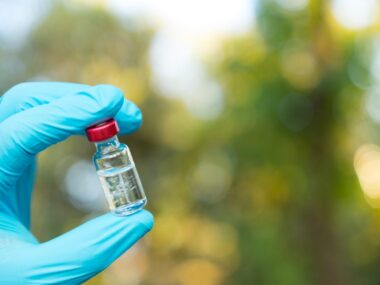Mechanism Discovered Behind Strongest Lupus Genetic Risk Factor
Findings could help develop potential treatments, senior author of study says
Written by |

The strongest genetic risk factor of systemic lupus erythematosus (SLE), HLA-DRB1*03:01, generates an abnormal protein that, in the presence of the pro-inflammatory interferon gamma (IFN-gamma), activates SLE-related genes and triggers SLE-characteristic cellular, tissue, and immune abnormalities.
These are the findings of a new study in lab-grown human and mouse immune cells, as well as a mouse model.
“For the first time, we have found the enigmatic mechanism that genetically predisposes people to the worst effects of the most typical form of lupus,” Joseph Holoshitz, MD, the study’s senior author and a professor of internal medicine and rheumatology at University of Michigan Medical School, said in an university press release.
“We have identified a chain of events … that demonstrate how the abnormalities that can cause lupus develop from the first effect of the risk gene, to signaling, all the way to immune abnormalities and clinical manifestations of lupus,” said Bruna Miglioranza Scavuzzi, PhD, the study’s first author and a postdoctoral research fellow in the rheumatology division at the same university.
Notably, by shedding light on the underlying molecular mechanism of SLE’s strongest genetic risk factor, researchers provided evidence that challenges the standard view of this type of genetic variant’s effects.
“The findings could potentially facilitate the discovery of safe, simple and effective treatments for SLE by targeting this new pathway,” Holoshitz said.
The study and its findings
The study, “The lupus susceptibility allele DRB1*03:01 encodes a disease-driving epitope,” was published in the journal Communications Biology.
SLE is associated with a pro-inflammatory state and the production of antibodies that wrongly recognize proteins in the cell’s nucleus — the compartment where all genetic information is stored — as foreign, mounting immune attacks against them.
This leads to cellular stress, problems in mitochondria (cells’ powerhouses), and aberrant cell death, ultimately damaging several tissues and organs in the body, including the kidneys.
The disease is thought to be driven by a combination of environmental and genetic factors, most often associated with human leukocyte antigen (HLA) genes, which are involved in immune responses. Specifically, the resulting HLA proteins are key for the presentation of antigens, or molecules with the potential to trigger an immune response to immune cells.
A genetic variant in the HLA-DRB1 gene, called HLA-DRB1*03:01, has been identified as the strongest HLA-related risk factor of SLE to date. It increases one’s risk of developing the condition by nearly twofold.
However, the mechanisms behind this association remain unclear.
Notably, “the prevailing hypotheses concerning HLA-disease association postulate presentation of self or foreign antigens by HLA molecules; however, the antigen presentation hypotheses have not yet been empirically validated in SLE,” the researchers wrote.
In the new study, Michigan researchers, along with colleagues in other U.S. institutions, provide evidence of an antigen presentation-independent mechanism of HLA-disease association in SLE.
They found that the HLA-DRB1*03:01 variant results in the production of an abnormal protein that contains a section that acts as an epitope, which is the part of an antigen that is recognized by the immune system, specifically by antibodies.
The team analyzed the effects of exposing lab-grown human and mouse macrophages — a type of immune cell implicated in SLE — to a lab-made form of that mutated protein section that is unable to promote antigen presentation.
Results showed that this mutated protein fragment activated several SLE-related genes in these macrophages, but only in the presence of IFN-gamma, a pro-inflammatory molecule known to play a key role in SLE development and severity.
This combination also triggered SLE-characteristic cellular abnormalities in the macrophages, including signs of cellular stress, mitochondrial dysfunction, pro-inflammatory cell death, and production of pro-inflammatory molecules.
In turn, exposure to a corresponding fragment resulting from an HLA-DRB1 variant — known to increase the risk of rheumatoid arthritis (RA), another autoimmune disease — promoted the activation of RA-related genes, but no cellular SLE hallmarks.
In addition, treating mice carrying the HLA-DRB1*03:01 variant with IFN-gamma resulted in an SLE-like disease. These mice showed higher levels of SLE-causing, anti-double-stranded DNA antibodies and kidney tissue changes that resembled those of lupus nephritis, a serious form of kidney inflammation in SLE patients.
These findings highlight that, in the presence of IFN-gamma, the protein coded by “the single most significant genetic risk factor for SLE” triggers a cascade of molecular and cellular effects linked to the disease, the researchers wrote.
Further research is needed “to dissect the respective roles of [this variant] and [IFN-gamma] and the mechanism of their interaction in SLE,” they wrote.
Notably, the team hypothesized that a combination of pro-inflammatory cell death with increased abundance of free DNA fragments, plus a pro-inflammatory state, may stimulate the production of antibodies against double-stranded DNA.
The observed impaired activation of the Dnase1l3 gene in macrophages from mice carrying the HLA-DRB1*03:01 variant may also contribute to the formation of these abnormal antibodies, the researchers noted. Dnase1l3 provides instructions to produce an enzyme that breaks down DNA found outside cells and whose deficiency is strongly implicated in SLE.
“This study provides evidence for a [nonstandard], antigen presentation-independent mechanism of HLA-disease association in SLE and could lay new foundations for our understanding of key molecular mechanisms that trigger and propagate this devastating autoimmune disease,” the researchers wrote.
“Exploration of such mechanisms in the context of human diseases could potentially identify new preventive, diagnostic, and therapeutic solutions,” they concluded.






